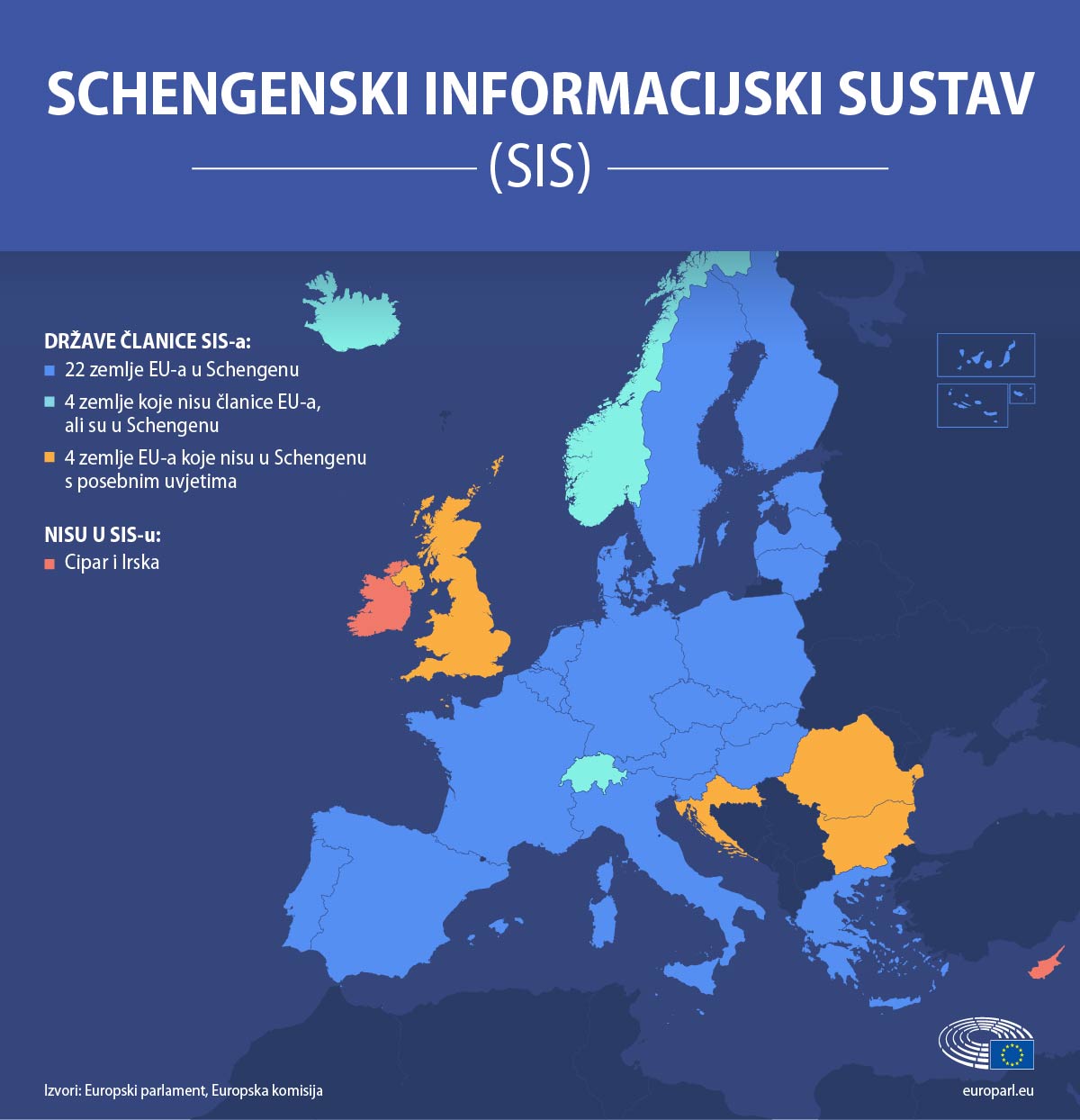
An upgraded Schengen Information System (SIS) has started to operate today. SIS is Europe’s largest information exchange system for security and border management. It contains information on wanted or missing persons, third-country nationals who do not have a legal right to stay in the Union and lost or stolen objects (e.g. cars, firearms, vessels and identity documents).
The upgraded SIS is the cornerstone of the world’s most advanced border management system. Together with the Entry/Exit System (EES) and the European Travel Information and Authorisation System (ETIAS), SIS is part of an interoperable architecture.
The improved SIS is being improved to include new alert categories, biometric data such as palm prints, fingerprints and DNA records for missing persons, as well as additional tools to fight crime and terrorism. Improvements are important as they provide preventive warnings to protect vulnerable people and deter irregular migration. These improvements aim to provide more complete and reliable information to improve security and border management.
Enhanced Features:
- • Improved information exchange and cooperation:New alert categories and more data will be shared through SIS, ensuring that more complete and reliable information is available. Clearer rules and improved structures for the exchange of information through national contact points (the SIRENE Bureaux) have been introduced.
- • New possibilities for locating and identifying wanted persons and strengthening external border controls:In addition to photographs and fingerprints, SIS will also contain new types of biometric data (palm prints, fingerprints and palm prints and DNA records for missing persons) and other information to locate and identify persons registered in the system.
- • Additional tools to fight crime and terrorism:New alerts on inquiry checks will allow national authorities to collect targeted information on suspects of serious crime or terrorism. For example, identification documents and car information used by suspects will be stored in SIS. There will be alerts on “unknown wanted persons” containing only fingerprints of unknown perpetrators from the locations of terrorist offences or serious crime.
- • Additional tools to protect missing and vulnerable persons:National authorities will be able to issue preventive alerts in the system to protect certain categories of vulnerable persons (children at risk of abduction or potential victims of terrorism, trafficking in human beings, gender-based violence or armed conflicts/crimes), in addition to existing alerts on missing persons.
- • Additional tools to prevent and deter irregular migrationReturn decisions will be part of the information exchanged in the system in order to improve the effective implementation of those decisions. Member States will have to enter an alert in SIS whenever they issue a return decision to third-country nationals who do not have a legal right to stay in the EU, allowing them to actively monitor whether the returnee leaves the territory of the EU effectively, paving the way for the mutual recognition of return decisions among Member States, as proposed by President von der Leyen ahead of the February European Council.
- • Increased use of SIS by EU agencies:Europol and national immigration authorities now have access to all alert categories in SIS. Operational teams of the European Border and Coast Guard Agency (Frontex) have been granted access to SIS (implementation is still ongoing).
SIS has strict data quality and protection requirements. The system only contains data on persons and objects sought by EU countries and Schengen Associated Countries. National authorities monitor the application of data protection rules in their respective countries, while the European Data Protection Supervisor (EDPS) monitors how data protection rules apply in the Central System managed by eu-LISA.